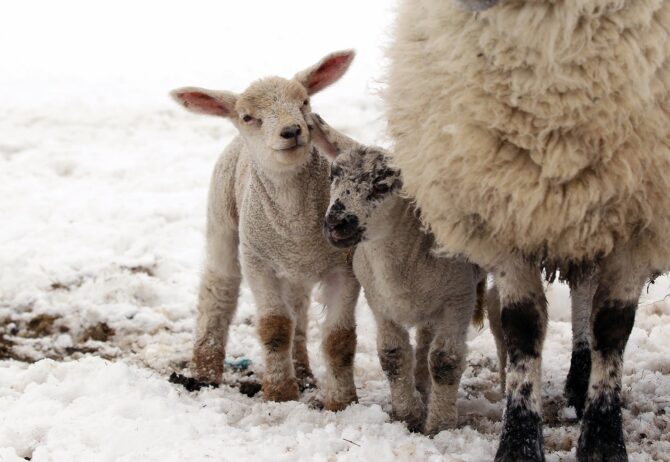Animals that live in lakes or live around lakeside dwell there for multiple reasons.
Those that live in the lake seem to consider the lake a natural habitat, while others hang around because the lake offers breakfast, lunch, and/or dinner. Whatever the reason, these animals depend on lakes.
Lake animals are not only fishes. Different animal types live in or around the lake, as well as a good number of species.
Mammals, insects, birds, amphibians, and reptiles are the common animals you can link to lakes. Some of these animals have an affinity for freshwater, and others live in many different habitats.
This article will list 35 animals that have lakes as habitats. Some are very common, and others you hear for the first time. Altogether, they make nature flourish in its ways.
List of Animals that Live in Lakes
1. Axolotl

- Scientific Name: Ambystoma mexicanum
- Range: North America
- Classification: Reptile
- Diet: Carnivorous
There are different salamander species, and not all take to the water. The Axolotl is also called the aquatic salamander, and unlike other amphibians that metamorphose to start breathing air, Axolotls remain with only gills.
It lives in lakes and was originally found there. An example of a lake that the Axolotl lives in is Lake Xochimilco in Mexico.
Axolotls are critically endangered now, and as of 2020 the wild ones almost got extinct. As of now, Lake Xochimilco is the only freshwater that the Axolotl is in.1 2
2. Beaver
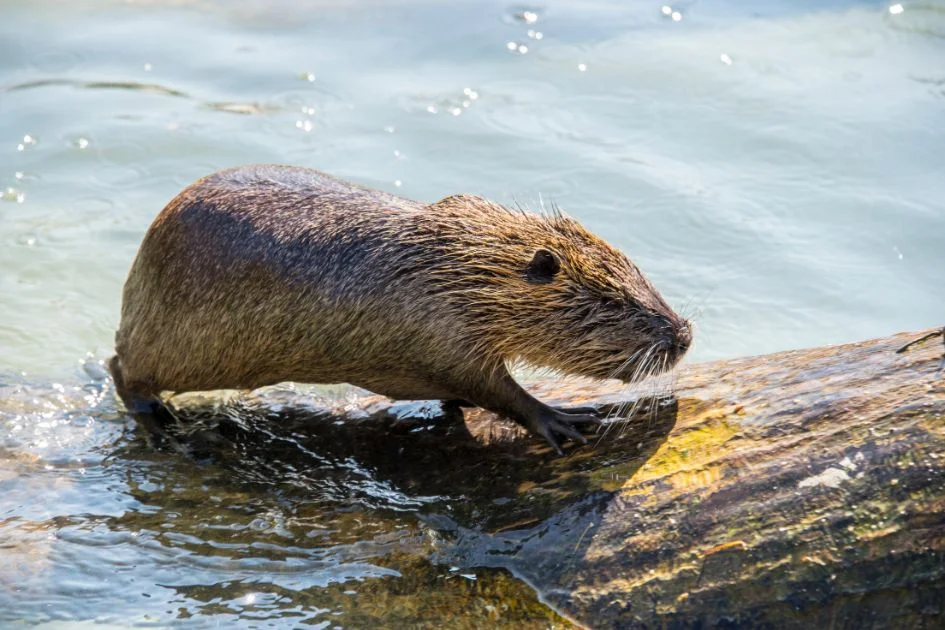
- Scientific Name: Castor
- Range: North America
- Classification: Rodents
- Diet: Herbivorous
Beavers are a special type of rodent. While common rodents like rats and rabbits are terrestrial, the beaver is one of the few rodents that can live in both water and land. It is also considered the second biggest rodent in the world, surpassed only by the capybara.
There are two beaver species: the Eurasian beaver and the North American beaver. Beavers can live in lakes and around them. They can also make a home out of ponds, rivers, and streams.
They are industrious animals, building dams and lodges in a way that displays strong intelligence. The beaver is also monogamous, and they live in pairs with their offspring.
3. Catfish

- Scientific Name: Siluriformes
- Range: Worldwide
- Classification: Fish
- Diet: Omnivorous
The catfish has visible whiskers like a cat, and that gave this fish its name. Though not common to all catfishes, the whiskers differentiate them from other fishes.
They live in every continent except Antarctica and can be found in every freshwater habitat, from lakes to streams.
Catfishes feed on plants and animals. They are predators, and many small fishes fall prey to catfish. They will also eat insects that fall into the waters.
They are edible to humans, and some are kept as aquarium pets. There’s a stereotype of catfishes stinging humans. While some species can do that, it isn’t true for all.
4. Caddisfly
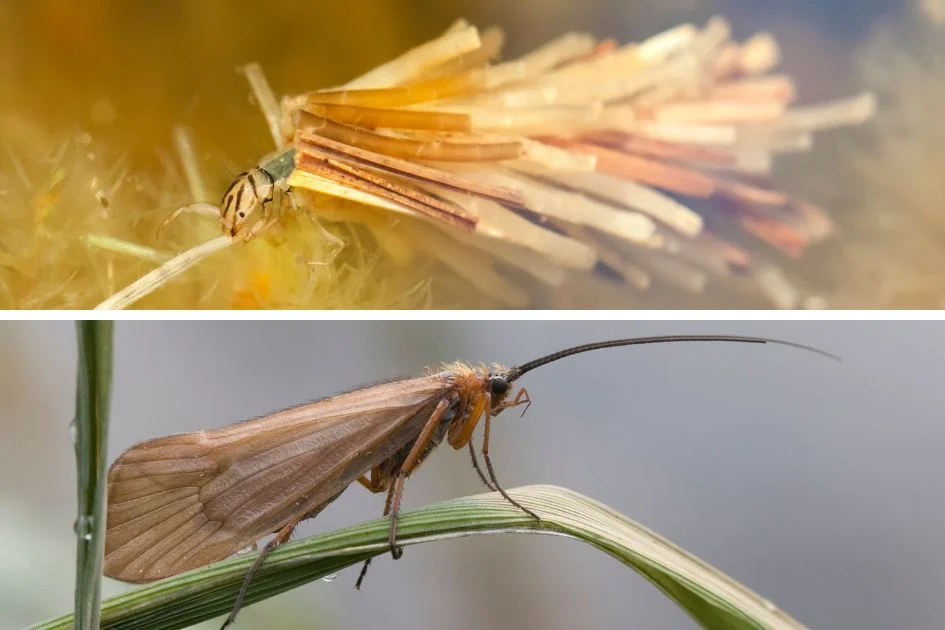
- Scientific Name: Trichoptera
- Range: Worldwide
- Classification: Insects
- Diet: Omnivorous
A caddisfly is a group of over 10,000 insect species. The larvae are aquatic while the adults become terrestrial, a pattern that’s common amongst many insects and amphibians.
The species can be broadly divided into two suborders: the Integripalpia and the Annulipalpia. The caddisfly larvae inhabit different water habitats, including lakes, rivers, and streams. The larvae feed on both plants and animals.
Caddisflies are known to spend the longest moments of their lives in the larvae form. As adults, they don’t live too long.
5. Largemouth Bass
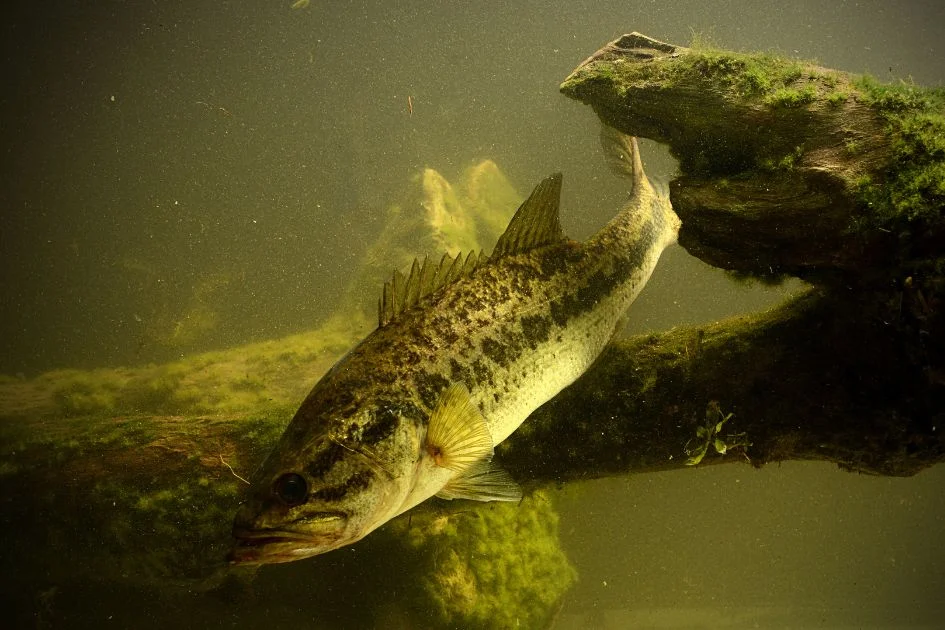
- Scientific Name: Micropterus salmoides
- Range: North Carolina, Florida, North Mexico
- Classification: Fish
- Diet: Omnivorous
The largemouth bass is a specie under the Black Bass genus, and though it can be found in different places around the world, it is native to North America. It can live in any watered habitat, which includes lakes.
The bass is an omnivore and can eat plants and animals. It is a formidable predator and has a wide range of prey. Some of its prey are insects, worms, snails, frogs, snakes, salamanders, bats, water birds, and the hatchlings of alligators.
6. Clam
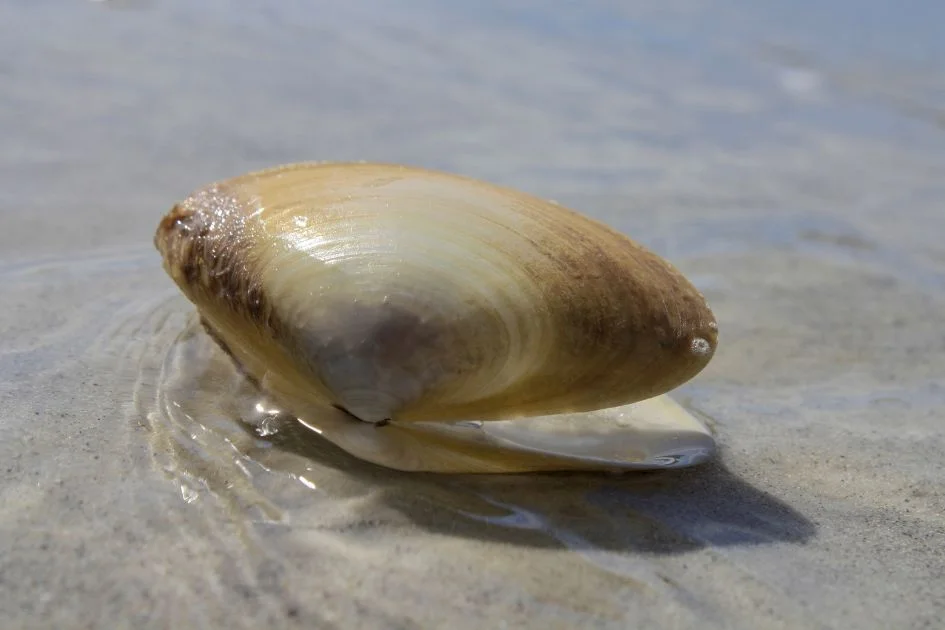
- Scientific Name: Bivalvia
- Range: Worldwide
- Classification: Mollusks
- Diet: Omnivorous
You’d probably recognize the clam from movies and documentaries. It lives in both saltwater and freshwater, and it is distributed worldwide.
Clams feed on algae, plankton, plants, and animals. They also serve as food to predators like walrus, sea lions, seals, and otters. Humans eat clams too. They also had some significance in different cultures and religions.
7. Crayfish
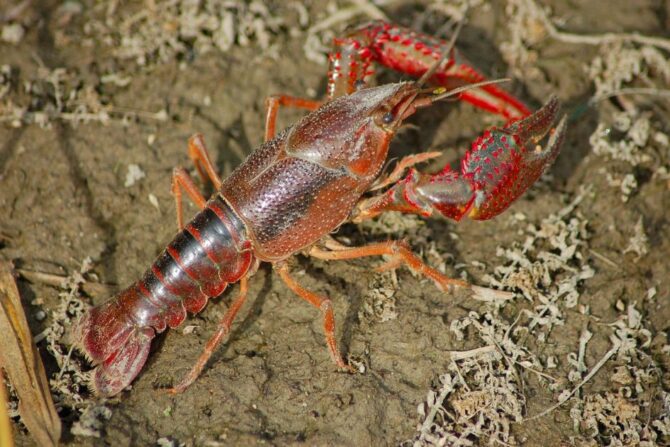
- Scientific Name: Cambarus SP
- Range: Worldwide
- Classification: Crustacean
- Diet: Omnivorous
The crayfish is a highly popular crustacean and an ingredient in many cuisines. They live in lakes and around it.
You’d find them under rocks or logs where they stay to evade predators. They are related to lobsters and look like them. They are also called Craw daddies, crawfish, mudbugs, bedbugs, etc.
Crayfish feed on insects, tadpoles, small fish, animal carcasses, and plants. They can also eat other invertebrates, including fellow crayfish.
8. Flamingo

- Scientific Name: Phoenicopterus roseus
- Range: Worldwide
- Classification: Bird
- Diet: Omnivorous
The flamingo is one of the most beautiful birds in the world, with colorful feathers that are pink, red, orange, and white.
There are four flamingo species that you can find both in the North and Southern parts of America, and two more in Africa, Europe, and Asia, making it a total of six species.
Two distinct physical traits of the flamingo are the long legs and the beak that curves downwards. The legs help it navigate water and together with the beak, it looks for food and aquatic plants. Flamingos are found in and around lakes.
9. Muscovy Ducks
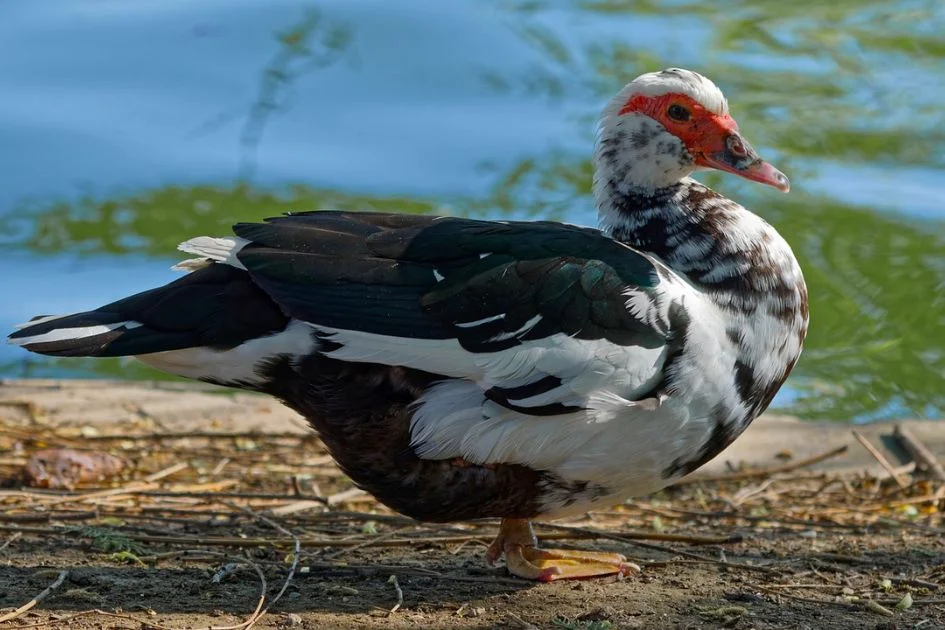
- Scientific Name: Cairina moschata
- Range: Mexico, Central America, South America, southern Texas
- Classification: Bird
- Diet: Omnivore
The Muscovy duck is a native of both North and South America, though not endemic to those continents. Some of them live in Europe, Australia, and New Zealand.
Their preferred habitats are lakes, swamps, streams, farm crops, and grasslands. Most of them have been domesticated.
The Muscovy duck is territorial to the point of aggressiveness, and the males usually fight for territories and the opposite gender. Females aren’t as territorial as males, however.
10. Deepwater Sculpin
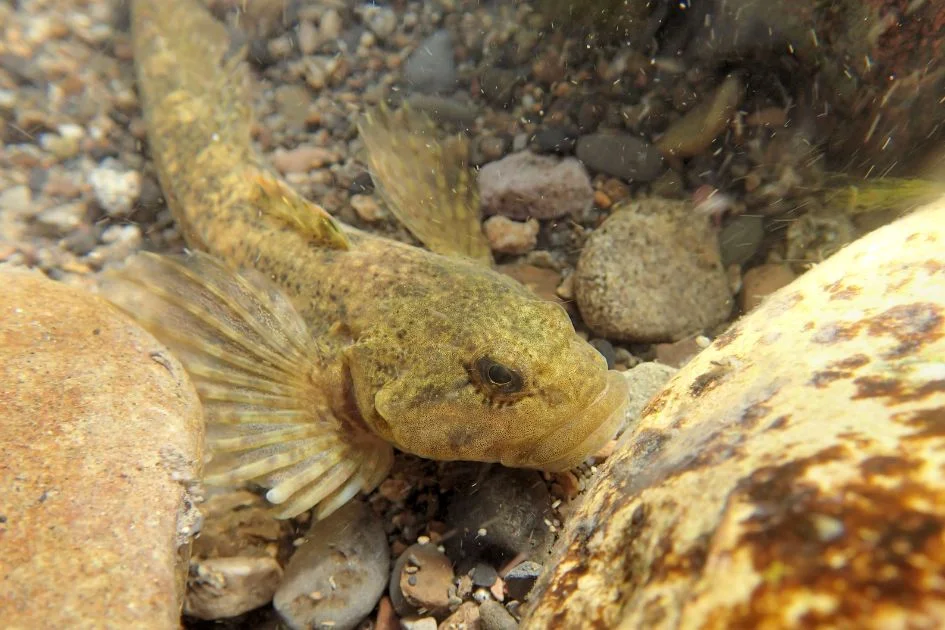
- Scientific Name: Cottoidea
- Range: Ozarks of Missouri, Arkansas
- Classification: Mollusca
- Diet: Carnivorous
The deepwater sculpin, as the name states, lives at the bottom of lakes. Its range is North America, down from Canada to the Great Lakes.3
There has been a decline in this Mollusca over the past few years, but it is not considered endangered or even threatened. Not much information exists on deepwater sculpins because of where it lives.
The reproductive cycle is blurry, and it isn’t easy to know how they mate. We do know they are carnivores, and they feed on crustaceans and larvae. They are also prey to deepwater lake trout.
11. Chinook Salmon
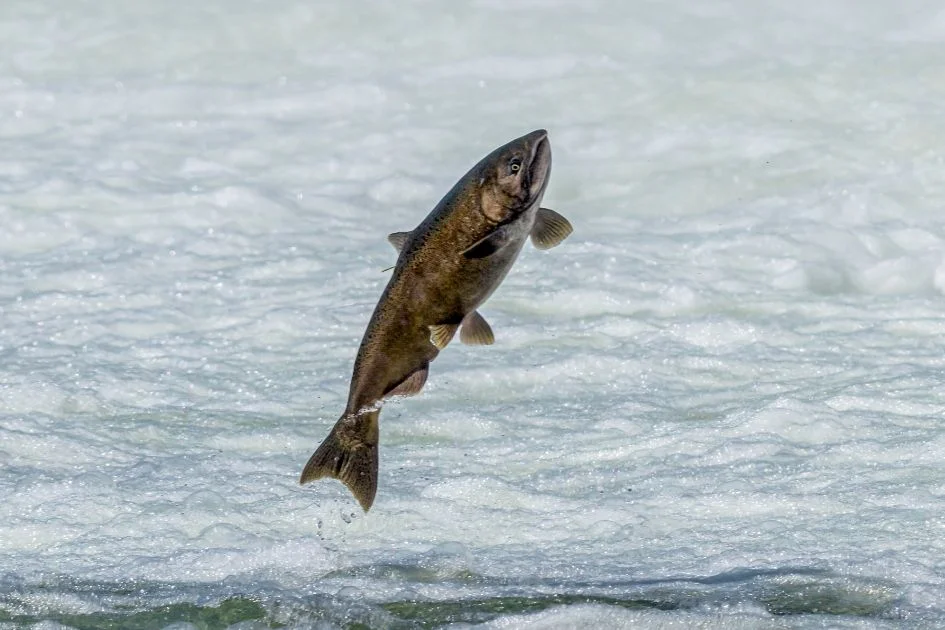
- Scientific Name: Oncorhynchus tsawytchas
- Range: California, Alaska
- Classification: Fish
- Diet: Omnivore
The Chinook salmon got its name from the Chinookan people, and it is considered the largest Pacific salmon in North America. It can also be called the king salmon, Quinnet salmon, Tsumen, Tyee salmon, Blackmouth, etc.
It lives in both oceans and lakes, both in North America and some other parts of the world like New Zealand where it was introduced. It is often hunted because of its flesh (and just for sports).
As such, some Chinook salmon population is endangered while others remain safe, possibly because of fewer human activities.
12. Frogs
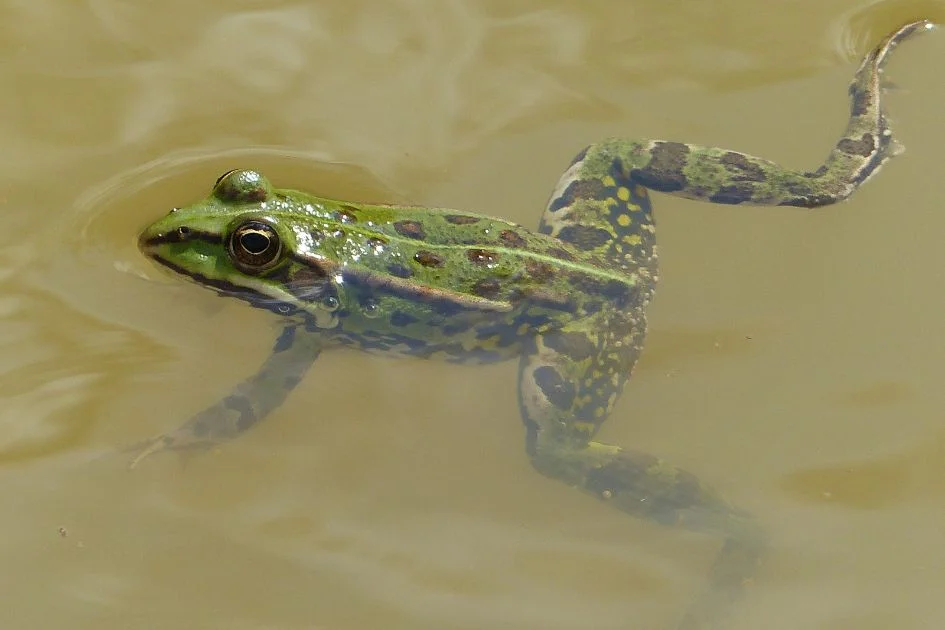
- Scientific Name: Anura
- Range: Worldwide
- Classification: Amphibian
- Diet: Carnivorous
Frogs are usually found around freshwater bodies, including lakes. There are many different kinds of frog species that inhabit lakes. Some examples are bullfrogs, green frogs, pickerel frogs, spring peepers, and leopard frogs.
Frogs are carnivorous, especially as adults. Their tongue is an insect’s nightmare. It is long enough to reach a flying insect and sticky to hold it. They can also use their poisonous skins to impale prey, and they are experts at camouflage.
13. Zebra Mussel

- Scientific Name: Dreissena polymorpha
- Range: Worldwide
- Classification: Mollusk
- Diet: Herbivorous
The zebra mussel was initially found only in Russia and Ukraine, but over time it spread to different countries all over by accident and invasion. That was how it got to the Great Lakes, Lake Travis, and Hudson River.
The zebra mussel feeds on plankton and other particles which it filters out of the water using its mouth. It is called a filter feeder because of this. While it is edible, experts don’t recommend the zebra diet for a meal as it can pile up toxins that are harmful to humans.
14. Lake Whitefish
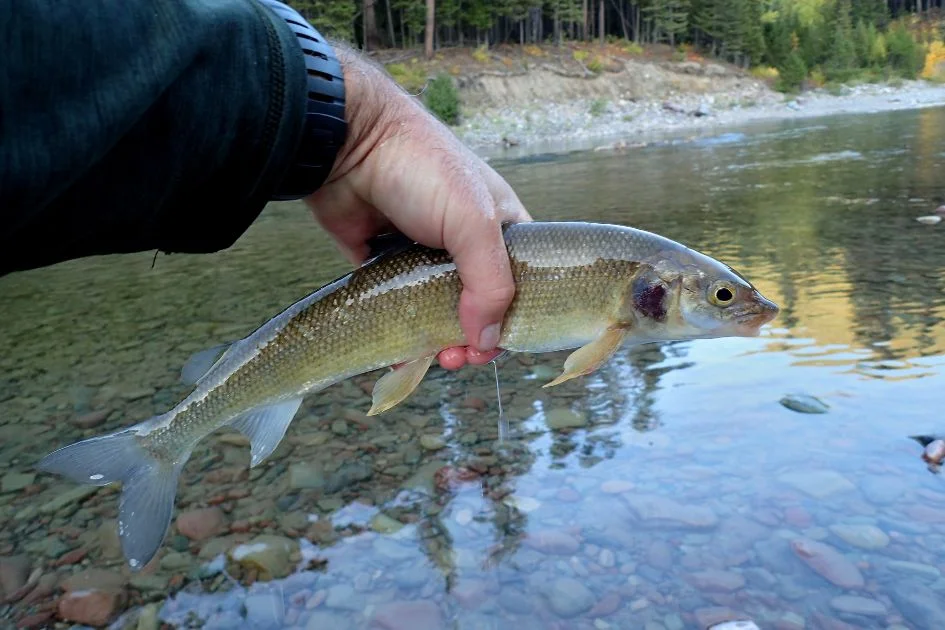
- Scientific Name: Coregonus clupeaformis
- Range: North America, Europe, Asia
- Classification: Fish
- Diet: Carnivorous
The lake whitefish is one of many freshwater species, and it is often found in cool waters. They live in Canada, the United States, and rivers found on other continents like Asia, Europe, and North America.
It is also known as the Otsego bass, gizzard fish, common whitefish, etc. The lake whitefish is carnivorous right from its larvae stage.
During those stages, the lake whitefish feeds on plankton. When it grows, its diet switches to animals like snails, zebra mussels, and insect larvae.
15. Walleye

- Scientific Name: Sander vitreus
- Range:
- Classification: Fish
- Diet: Carnivorous
The walleye is also called a yellow pike or yellow pickerel and is often found in lakes. Some people call it the pickerel, although there’s a difference between it and a true pickerel.
The walleye is edible and is a core part of Canadian cuisine. It is often fished both for recreation and commerce. Fortunately, the population hasn’t dwindled greatly due to regulations.
The walleye is nocturnal and carries out most of its activities after sunset. It is carnivorous and a predator of its own, hunting down smaller fishes and crustaceans.
16. Snails

- Scientific Name: Gastropoda
- Range: Worldwide
- Classification: Gastropoda
- Diet: Omnivorous
Snails are very common in all continents besides Atlanta, and it is hard to find someone who has never come across one.
They can be found in different habitats, both terrestrial and aquatic. Used in a general sense, “snail” refers to land, freshwater, and seawater snails.
Snails often feed at night, and that’s when they are more active. Their diet is vast, ranging from decaying matter to slugs. The common meal includes fungi, lichens, slugs, centipedes, and insects.
17. Snapping Turtle

- Scientific Name: Chelydra serpentina
- Range: the Eastern United States, Rocky Mountains
- Classification: Reptile
- Diet: Omnivorous
The snapping turtle is found in a lot of freshwater habitats, from ponds to lakes. It falls under the Chelydra family and has the scientific name Serpentina because of the snakelike head protruding out of the shell.
The snapping turtle is also called the common snapping turtle because it is the most widespread species in the family.
Snapping turtles have no strong predators in their environment as it tends to be at the top of the food chain. It feeds on fishes, worms, and amphibians, amongst others.
18. Greater Scaup

- Scientific Name: Aythya Affinis
- Range: North America, Europe
- Classification: Bird
- Diet: Omnivorous
This specie can be found in North American countries, from Canada to Alaska. Some also live in Siberia and European countries. It is also known as the bluebill or simply the scaup. The lake is one of their preferred habitats, along with others like marshes.
As an omnivore, the Greater Scaup feeds on fishes, worms, aquatic plants, insects, snails, clams, crustaceans, etc. It is still safe but gets threatened by predators like owls, raccoons, foxes, and coyotes.
19. Ring-billed Gulls

- Scientific Name: Larus Delawarensis
- Range: North America
- Classification: Bird
- Diet: Omnivorous
Ring-billed Gulls (or Gulls for short) are good at making a home out of freshwater areas. They are often found around lakes, especially on islands where they are known to make their nests. It migrates a lot but doesn’t abandon its nesting site.
The Ring-billed Gull feeds on both plants and animals. It is a clever thief, scavenger, and hunter. Its meal includes insects, grain, fish, eggs, and earthworms.
20. Salmon

- Scientific Name: Salmo Salar
- Range: Great Lakes of North America, Patagonia
- Classification: Fish
- Diet: Omnivorous
Salmon is a common part of many cuisines, and it has fast become a popular food fish for many fish food lovers. Before turning into a meal, the salmon lives as an active fish in freshwater habitats like lakes and ponds.
It belongs to the family Salmonidae with other fishes like trout, char, whitefish, and grayling. The Salmon is an omnivore, and it makes a meal out of other fishes.
Their reproductive style is a tragic tale. Due to movements and other processes involved, the male and female often die after mating.4
21. Perch

- Scientific Name: Perca
- Range: Missouri, Western Pennsylvania, South Carolina, Maine
- Classification: Fish
- Diet: Carnivorous
The perch lives around North America and are found in lakes. There are three existing perch species, the European perch, the Balkhash perch, and the yellow perch.
You don’t find them on the surface of the water as they live at the bottom, somewhere between 25 and 35 feet. As a carnivore, the perch feeds on shellfish, smaller fish, and insect larvae.
They live in waters where these fishes and insects are available in large numbers, as well as plants to use and cover their eggs from predators.
22. Painted Turtle

- Scientific Name: Chrysemys picta
- Range: The United States, Southern Canada
- Classification: Reptile
- Diet: Omnivorous
One of the most unusual reptiles and turtles in the world, the painted turtle earned its name because of the different colors on its skin, like strokes of paint.
It is a very old species, having existed for 15 million years, and it remains the most widespread turtle in North America. The painted turtle’s habitat is aquatic and it lives in slow-moving freshwaters, one of which is the lake.
It feeds on algae, vegetation, insects, fish, and crustaceans. They are prey to some predators, though it is hard to feed on an adult Painted Turtle because of its shell.
23. Otter
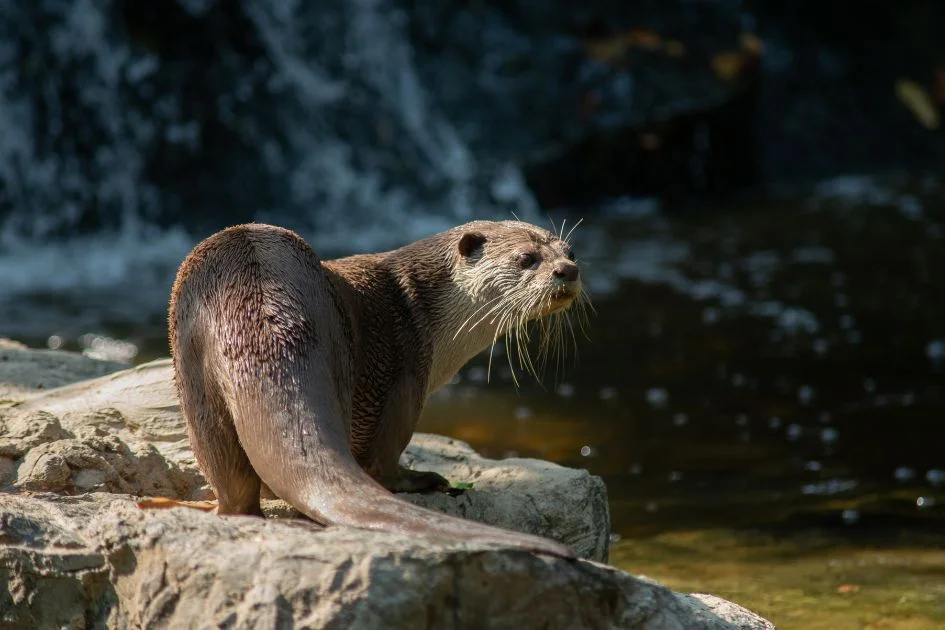
- Scientific Name: Lutrinae
- Range: Worldwide
- Classification: Rodent
- Diet: Carnivorous
An otter is a group of 13 rodent species found in different habitats. Some are marine, others are aquatic while the third category is for semi-aquatic otters. Otters are related to badgers and weasels as they belonged to the same family.
Otters feed mainly on fishes but don’t limit themselves to the fin creatures. Crabs, frogs, crayfish, mammals, and birds are some other prey. Shellfishes can’t resist otters too because the latter can break through the shell.
24. Opossum Shrimp
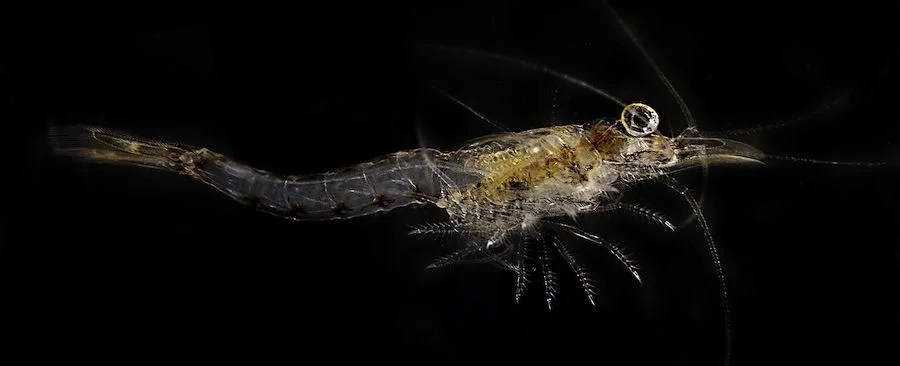
- Scientific Name: Mysida
- Range: Great Lakes
- Classification: Crustacean
- Diet: Omnivorous
The chances of seeing an opossum shrimp at the surface of the lake are low because it lives underwater, right at the bottom.
It can be found in both seawater and freshwater as both provide suitable habitats. Opossum shrimp species do live more in seawater, but some others are in freshwater.
Opossum shrimps feed on algae, insects, plants, and invertebrates. These invertebrates include snails, clams, and larvae. The sexes are either male or female, and mating doesn’t last long with the opossum shrimp.
25. Long-tailed Duck

- Scientific Name: Clangula hyemalis
- Range: Northern Canada
- Classification: Bird
- Diet: Carnivorous
Also known as the Old-Squaw duck (though less so now), the Long Tailed Duck is a native of North America, specifically in Canada.
It inhabits pools, marshes, lakes, and some others. There has been a decline in the population of this species, and it is considered near threatened.
For the long-tailed duck, hunting is a diving sport. It gets its prey by diving toward it. Crustaceans, mollusks, and some small fishes are not safe with the Long Tailed Duck around.
26. Mink

- Scientific Name: Neovison vison
- Range: North America
- Classification: Rodent
- Diet: Carnivorous
The mink is a semiaquatic rodent that is in the same family as otters, weasels, and ferrets.
Minks are subdivided into two species: the European mink and the American counterpart. The Mink is expected to live up to 10 years, but life in the wild cuts its lifespan down to 3 years.
This rodent is a strong predator and carnivore, even going as far as eating young ones. It isn’t primarily a cannibal, though. Rodents feed on fish, birds, eggs, and small mammals.
27. Mayfly
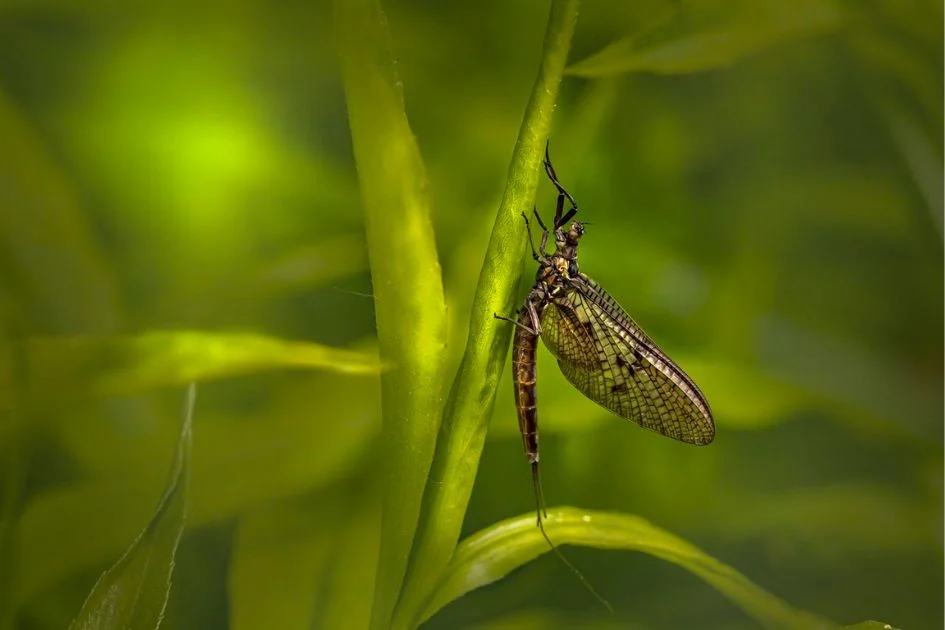
- Scientific Name: Ephemeroptera
- Range: Worldwide
- Classification: Insects
- Diet: Omnivorous
The mayfly also goes by the name shadflies or fishflies, and it refers to a group of insects, all aquatic, and under the same order. Mayflies share some similarities with dragonflies and damselflies, and all three fall under the Paleoptera order.
There are over 3,000 mayfly species worldwide, grouped into 400 genera. These insects get their nutrients from both plants and animals, but one sad fact is that they only eat as nymphs because the adults live for only 24 hours.
28. Lake Sturgeon
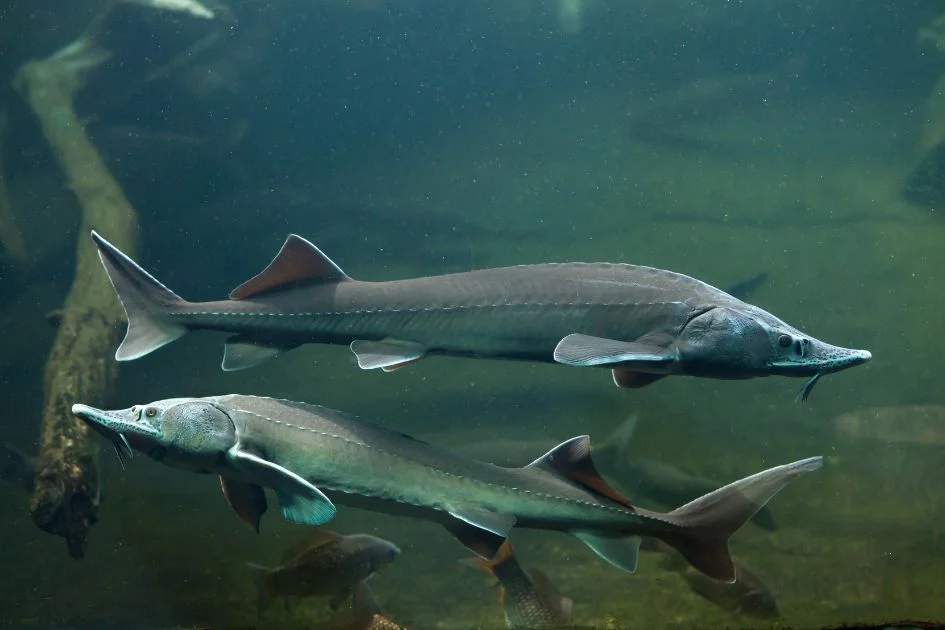
- Scientific Name: Acipenser fulvescens
- Range: Mississippi River, Hudson Bay, the Great Lake
- Classification: Fish
- Diet: Carnivore
The Lake sturgeon is also termed Rock sturgeon, and it is one specie out of the 25 Sturgeon species, and the only sturgeon considered a freshwater fish. You can find it in the Great Lake, the Mississippi River, and Hudson Bay.
Lake sturgeons feed on various prey, and the number of prey is a factor that determines their choice of habitat, alongside other factors.
29. Lake Trout

- Scientific Name: Salvelinus namaycush
- Range: Northern North America
- Classification: Fish
- Diet: Carnivore
The Lake trout has a name well deserved as it can be found in many large, deep lakes. It is a cold-water fish and goes with other names like mackinaw, namaycush, lake char, togue, grey trout, etc.
Lake trouts take time before they are fully mature, and because they are a target of commercial fishing, many have found themselves susceptible to overfishing. It doesn’t help that it is also a target for recreational fishing.
30. Lake Herring

- Scientific Name: Coregonus Artedi
- Range: St Lawrence River, the Great Lakes, the Arctic ocean
- Classification: Fish
- Diet: Carnivorous
Lake herring lives in North America and Europe. It goes by many other names like Cisco, Chub, Tubilee, and Northern Cisco.
It is considered a North American freshwater whitefish species, though it can also be found in the Arctic Ocean, a saltwater habitat.
This fish carnivorous need can only be met by feeding on insects, plankton, and young fish. It is also preyed upon by certain animals like the rainbow trout, northern pike, burbot, yellow perch, and walleye.
31. Jullien’s Golden Carp

- Scientific Name: Probarbus jullieni
- Range: Southeast Asia
- Classification: Fish
- Diet: Omnivorous
The Jullien’s golden carp originated in China, and can mainly be found in many parts of Southeast Asia, including Thailand, Vietnam, Cambodia, Malaysia, and Laos. It is currently an endangered species due to overfishing and other factors.
The fish feeds on both plants and animals like prawns, shellfish, and aquatic plants. Their feeding style changes to accommodate seasons. In wet seasons with more food, the Golden Carp eats more.
32. Scud

- Scientific Name: Gammarus roeselii
- Range: Worldwide
- Classification: Crustacean
- Diet: Omnivorous
The scud is also known as the Amphipoda, freshwater shrimp, and side swimmers. It is an order of crustaceans, most of which can be found in aquatic habitats all over, both saltwater and freshwater. Under the order are more than 9,900 species.
Scuds are omnivorous, and their main meal is detritus. It also eats live algae, fungi, and bacteria.
33. Water Boatman
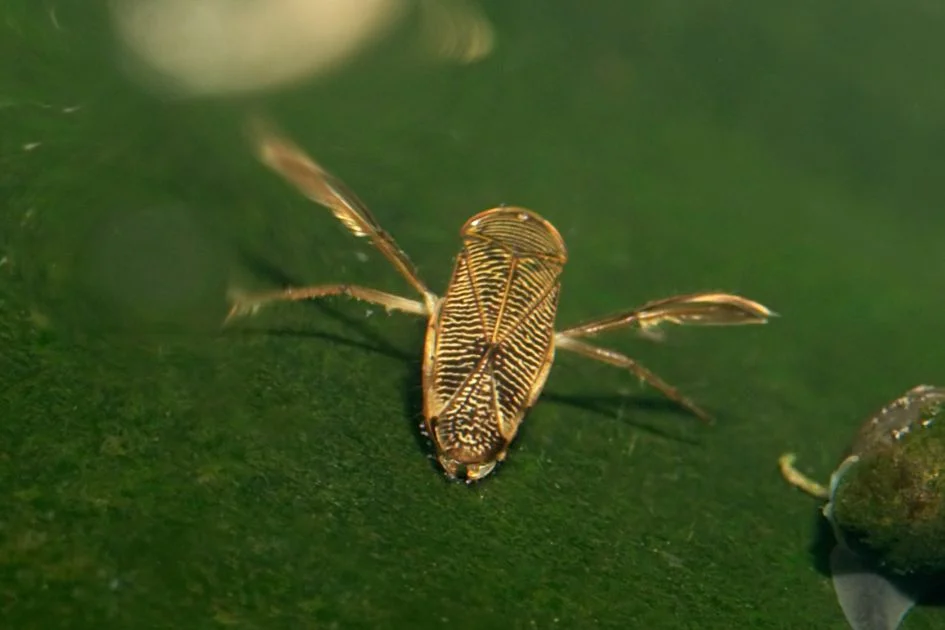
- Scientific Name: Hesperocorixa castanea
- Range: Worldwide
- Classification: Insects
- Diet: Herbivorous
The name “Water Boatmen” is the American term for a family of aquatic insects known as the Corixidae. There is an estimate of 500 species under this family, and what makes them different from other insects is their aquatic nature.
They can be found in both freshwater and saltwater, and the name “Water Boatmen” comes from the forelegs that are like oars. Water boatmen are non-predatory and feed only on plants and algae.
This distinguishes them from other insects in the Hemiptera order that are either carnivorous or omnivorous.
34. American Bittern
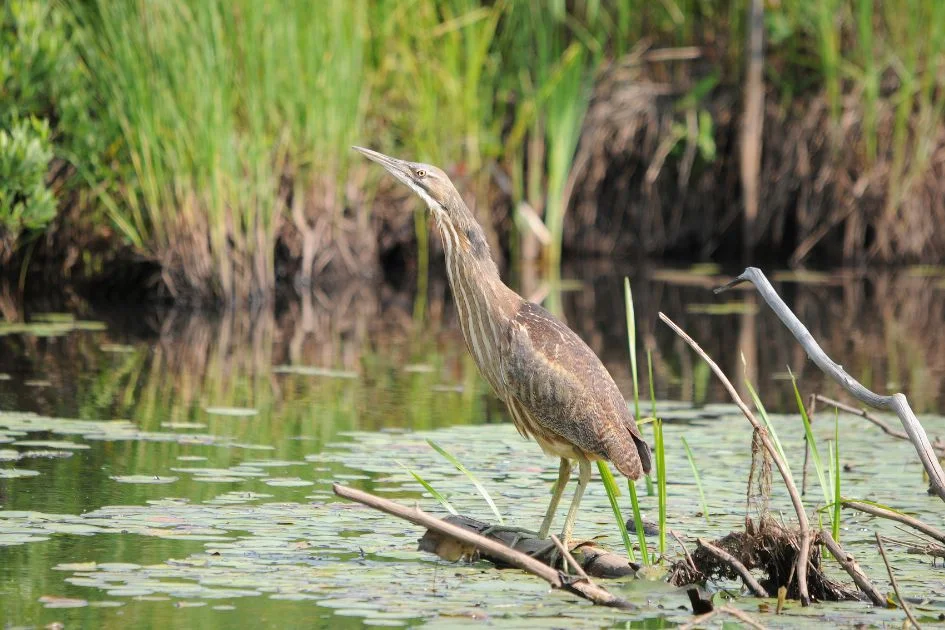
- Scientific Name: Botaurus lentiginosus
- Range: United States, Canada
- Classification: Bird
- Diet: Carnivorous
The American bittern is a specie of bittern birds that fall under the subfamily Botaurinae in the heron family. American bitterns can be found in Canada, the United States, and even places in Central America.
Their preferred habitats are marshes and vegetation close to lakes and ponds. One reason they stay close to lakes and ponds is to get food.
These birds are carnivorous, and their diet consists of fish, crustaceans, and insects, all of which can be found in and around lakes and ponds.
35. Spiders
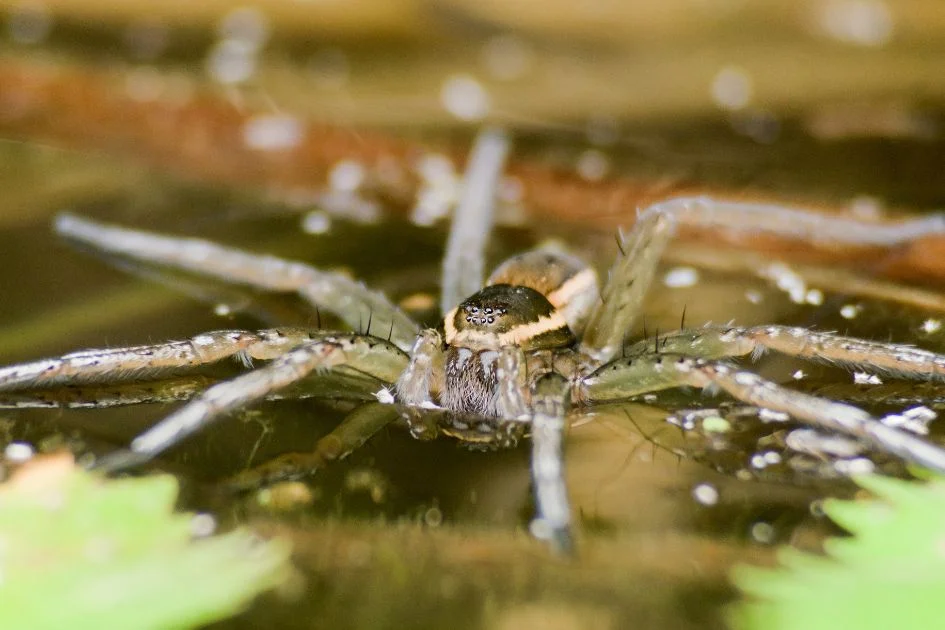
- Scientific Name: Araneae
- Range: Worldwide
- Classification: Arachnids
- Diet: Carnivorous
Spiders can be found everywhere, even under your bed. It might surprise you to see this arachnid listed under lake animals, but there are more spider species than the ones that live close to humans, and many have adapted to aquatic habitats.5
An example is the fishing spider (Dolomedes) or the diving bell spider (Argyroneta aquatica) known to be almost entirely live underwater.
Spiders are generally carnivorous, though a few species have herbivorous traits. They trap prey using their almost invisible webs. Spider’s prey includes insects and sometimes other spiders.
Final Thoughts
There you have it! The list of 35 both common and uncommon animals that live in lakes. Animals that live in ponds and lakes dwell there for several reasons. They add up to the fauna world and are integral parts of nature.
We know this isn’t an exhaustive list, so feel free to mention any other lake animals (fish, insect, amphibian, or otherwise) in the comments.
References & Notes
- Walker M. 2009. Axolotl verges on wild extinction. BBC.
- Ambystoma mexicanum (Axolotl). The IUCN Red List of Threatened Species.
- The Deepwater Sculpin (Great Lakes-Western St. Lawrence): a species at risk in Ontario. Government of Canada Publications.
- Why do salmon change color and die after they spawn? U.S. Geological Survey
- Aquatic Spiders. Missouri Department of Conservation.



